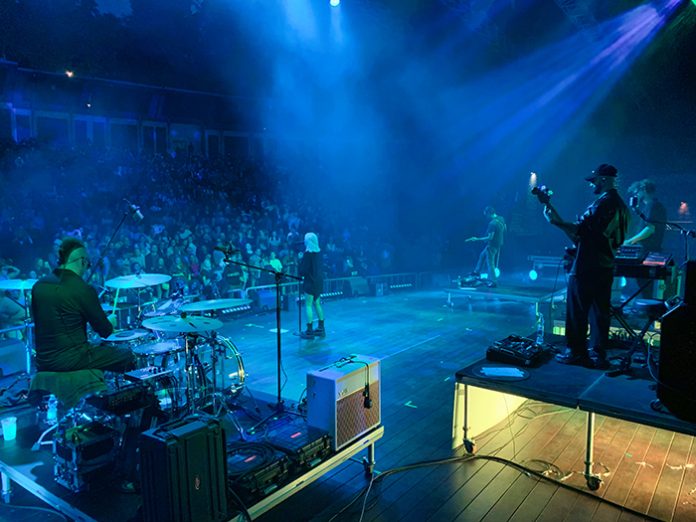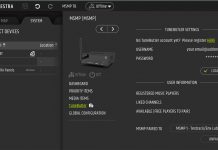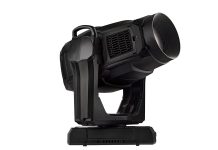Just off a tour with Polish vocalist Daria Zawialow and her four-member band, and currently out with Five Finger Death Punch, Szczepan Buzun is a live sound engineer with over 12 years of experience specialising in mixing monitors.
Over his career, Buzun says he’s relied on RF Venue gear including CP Beam and Diversity Fin antennas, COMBINE4 and COMBINE8 IEM transmitter combiners, and the 4 ZONE multizone antenna combiner for wireless mics.
He owns RF Venue RF Spotlight antennas and the RF Explorer PRO RF Spectrum Analyzer and is looking to pick up a couple of RF Band-pass Filters, all from the line of wireless audio essentials from RF Venue, designed to bulletproof the performance of any manufacturer’s wireless mic and IEM systems.
Buzun has worked for the two largest sound companies in Poland, gaining knowledge and expanding his skills through mixing at festivals, on live TV shows, at orchestral performances, touring with bands, and more.
“I also specialize on RF coordination and intercoms,” he says. “For the last two years, I’ve worked for AudioRent Clair [part of the Clair Global family] as a monitor tech and RF coordinator, mostly for K-pop bands with complicated RF requirements.”
“While touring with Daria Zawialow,” says Buzun, “we did festivals, small venues and open-air shows, and we didn’t have any problem with dropouts. The coverage of the Spotlight antennas was good at all the locations.” The low-profile RF Spotlight antenna for wireless microphones, he continues, “is invisible. I had one on the riser. A few musicians were very surprised when they noticed that it was an antenna. I also tried to use this antenna as an IEM TX antenna for IEMs and the results were very impressive. Transmission was very stable. Usually, I use low power for most of the venues and that was enough for a stage and the dressing room area or arenas.”
Wireless microphones used by Zawialow were a Sennheiser SKM 6000 digital wireless handheld mic with a MMD 945 BK capsule for lead vocal and SK6000 digital wireless bodypack transmitter for her guitar, both being picked up through RF Venue RF Spotlight antenna located upstage-center and a Sennheiser A2003 at the monitor position “just for diversity,” according to Buzun. The antennas fed a Sennheiser EM6000 Dante AW+ band digital wireless receiver.
IEMs for the tour were fed wirelessly by four Sennheiser SR2050 dual-channel AW+ band transmitters with their outputs unified to a single antenna feed by an RF Venue COMBINE8 transmitter combiner. Eight Sennheiser EK2000 AW+ band beltpack receivers were used by the musicians, guests, tech and cue.
Artists that Buzun has worked with include Black Pink, Aespa, ITZY and Twice, and he’s worked on projects as diverse as WWE events in London and Saudi Arabia plus the WEB Summit Qatar 2024. He is currently on a European tour leg with Five Finger Death Punch as a monitor tech and RF coordinator.
“We use the RF Venue Diversity Fin antennas for all of the guitar rigs,” he shares. “That is very helpful for the guitarists, because the position of the TX pack is always a challenge. With the Diversity Fins, the problem with position disappears because they have vertical and horizontal capture. As the antennas are one device with dual antennas, they are easy to mount and use, unlike other antennas where you need two separate paddles and sometimes a dedicated distro. We don’t have any issues with coverage and dropouts. We plug the Diversity Fin antennas directly to the Shure AD4D Axient Digital dual-channel receivers and it works great.”
Buzun also says that he is a “big fan” of the new RF Explorer PRO handheld RF spectrum analyzer. “This small device is so powerful. Files are compatible with RF coordination software. I tested it with Wireless Workbench, WSM, Wireless Designer and SoundBase. Also, I did comparisons during my last K-pop tour with ITZY with two different scanners (OWON and SHURE AXT600) and the results were identical. As an RF tech, I like to have two separate scanning systems both to feel safer and because I can monitor two different things at the same time which is very helpful if you have a lot of the devices operating in different RF bands. I used this device to measure the whole TX and RX setup for WWE in Saudi Arabia on their latest event there. I could detect detailed differences on each node and make changes on the devices to have exactly the same TX power between the main rack and nodes for all of the antennas that I used.”





